WAREHOUSE TALES
WAREHOUSE TALES

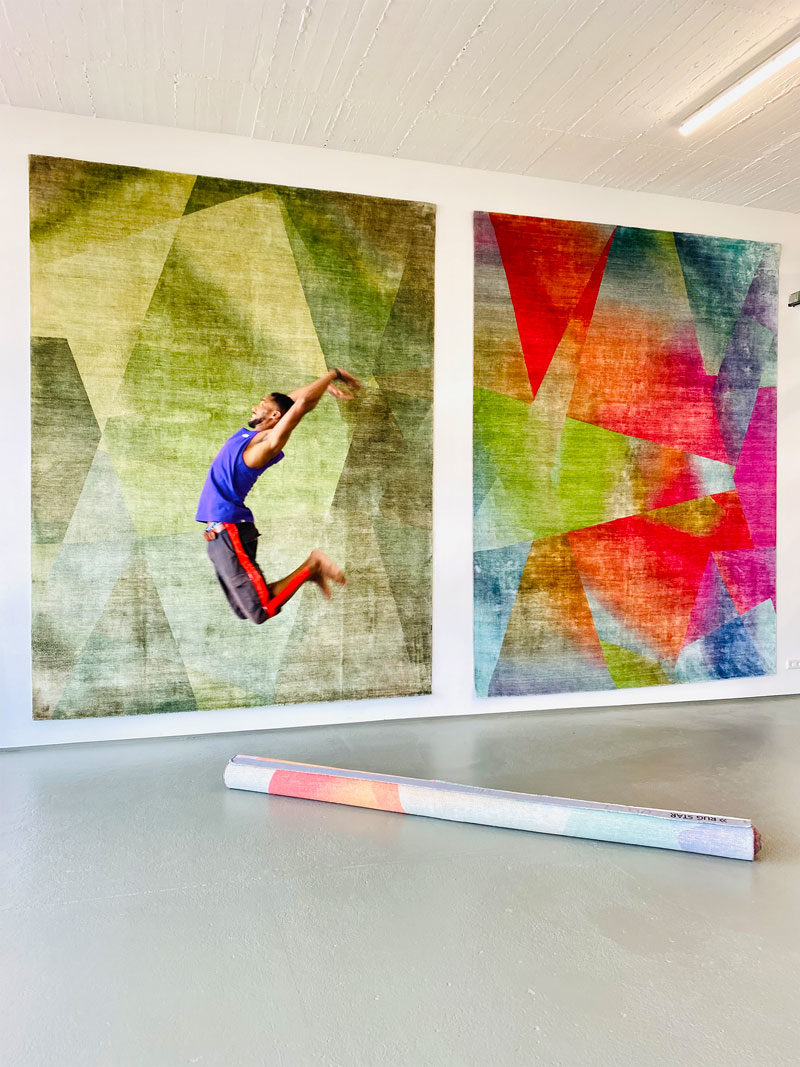

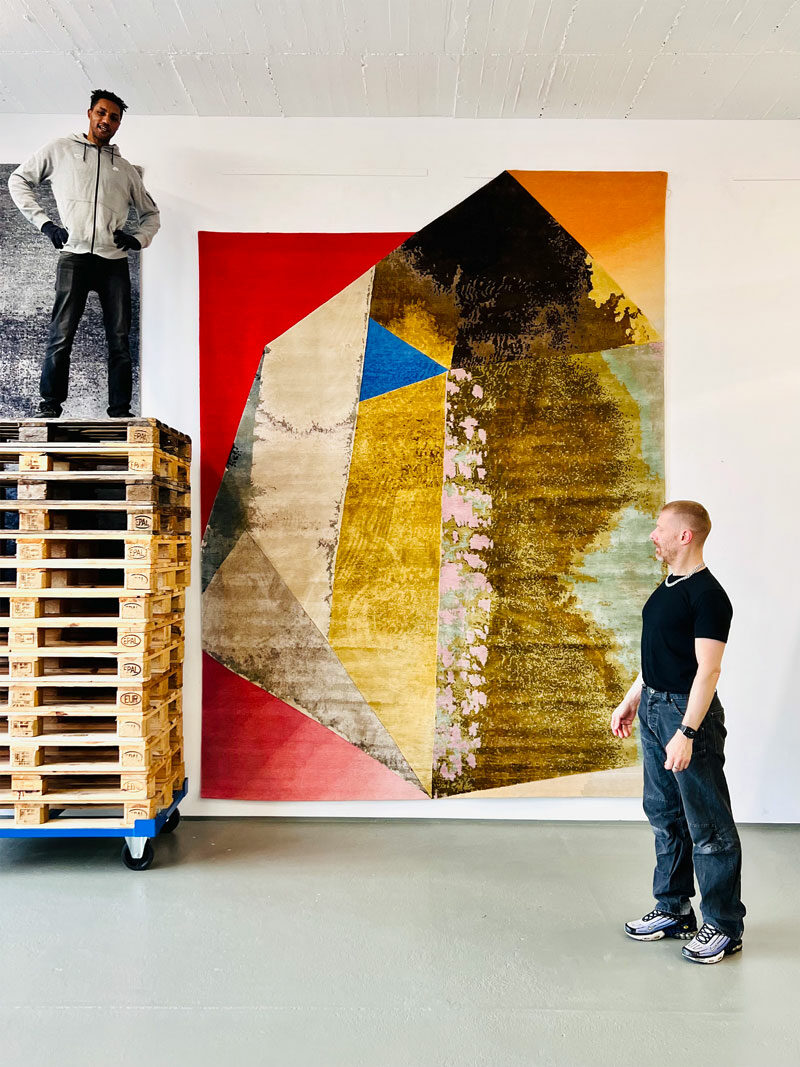

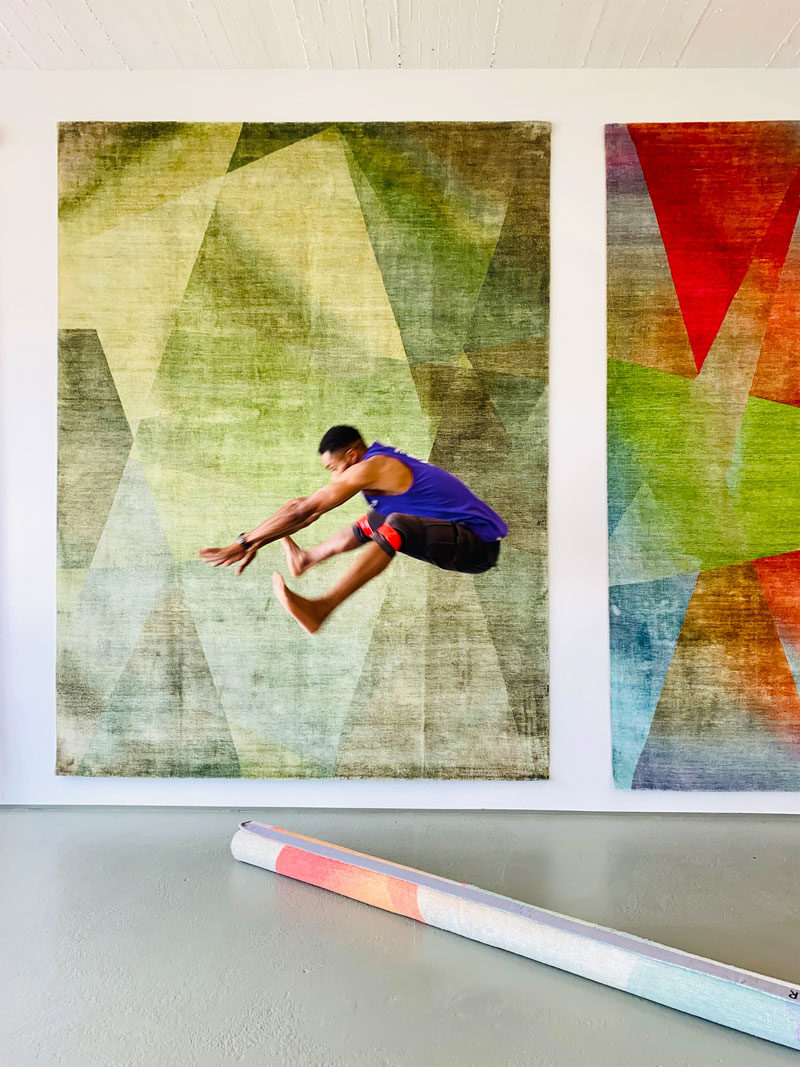

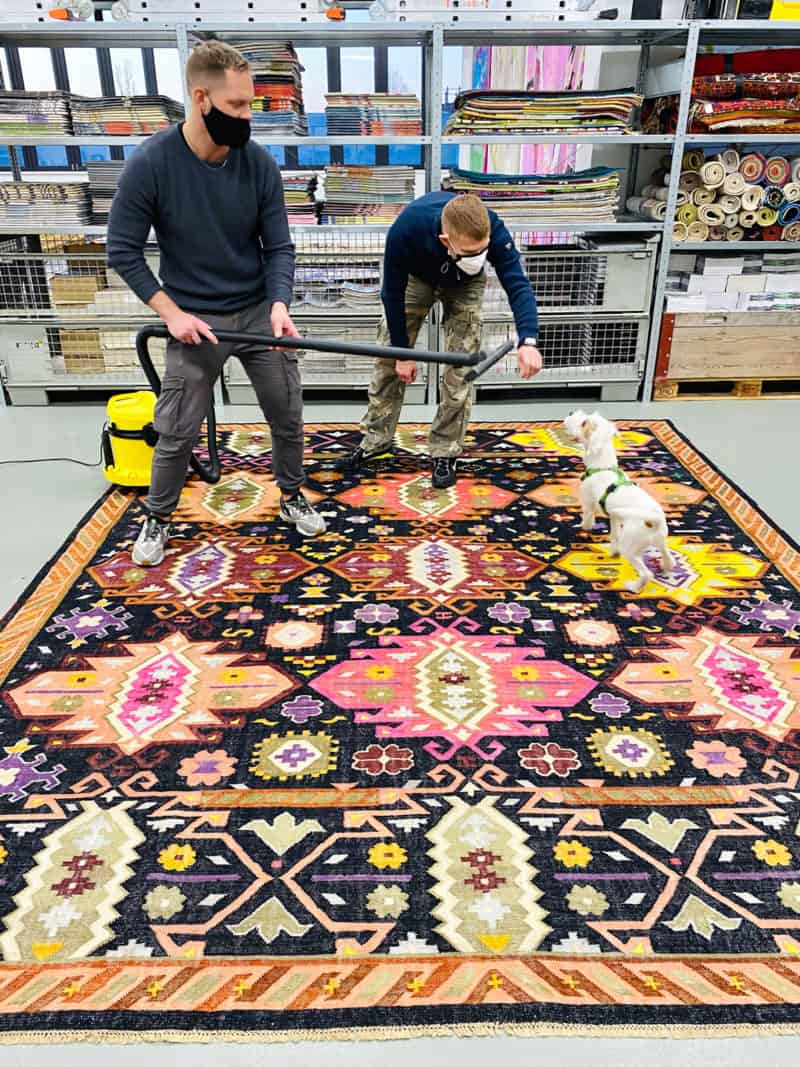
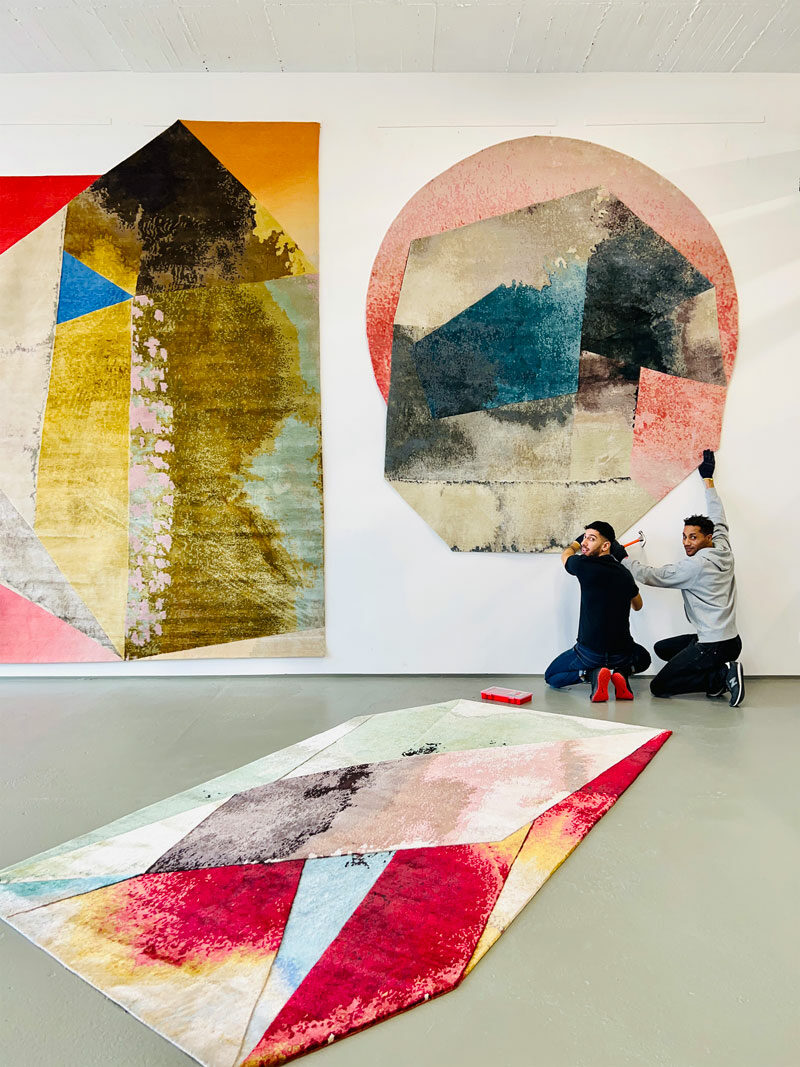



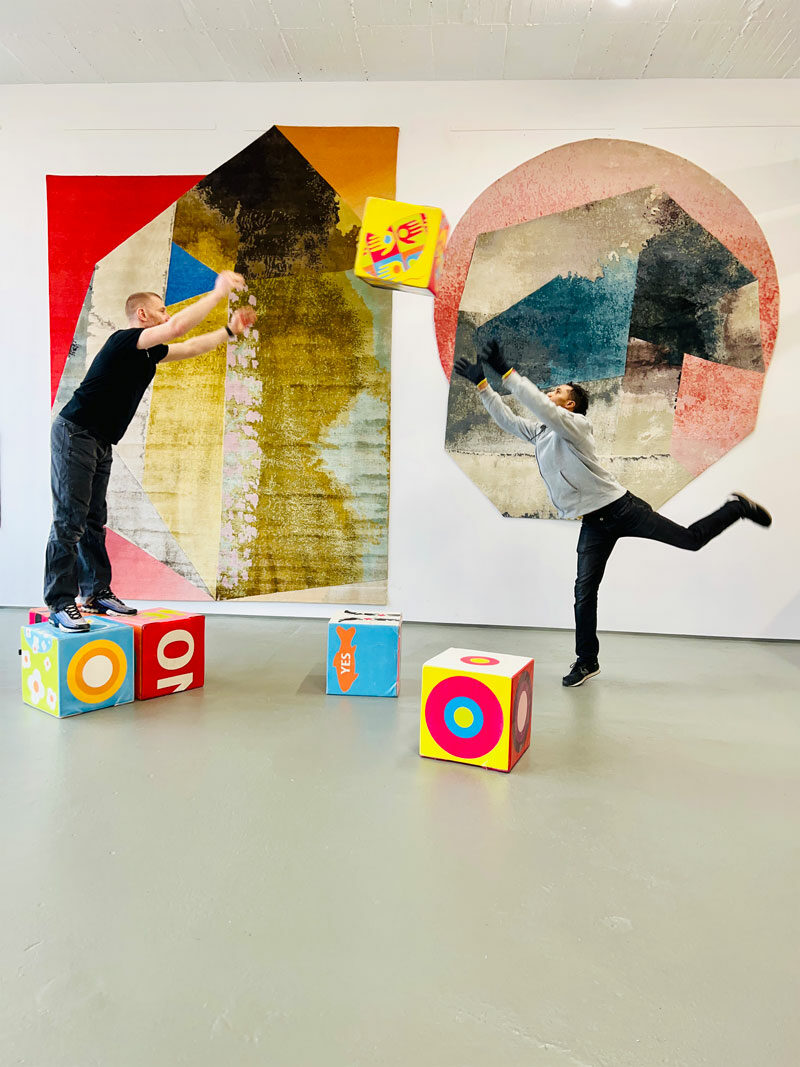
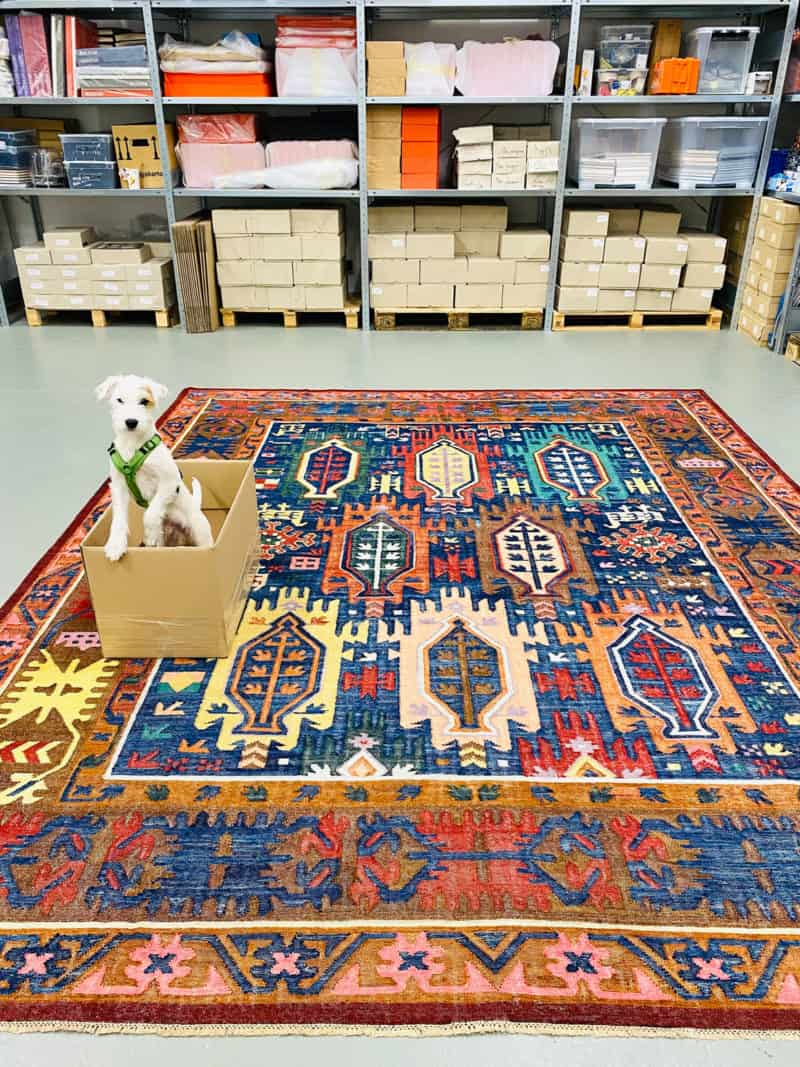
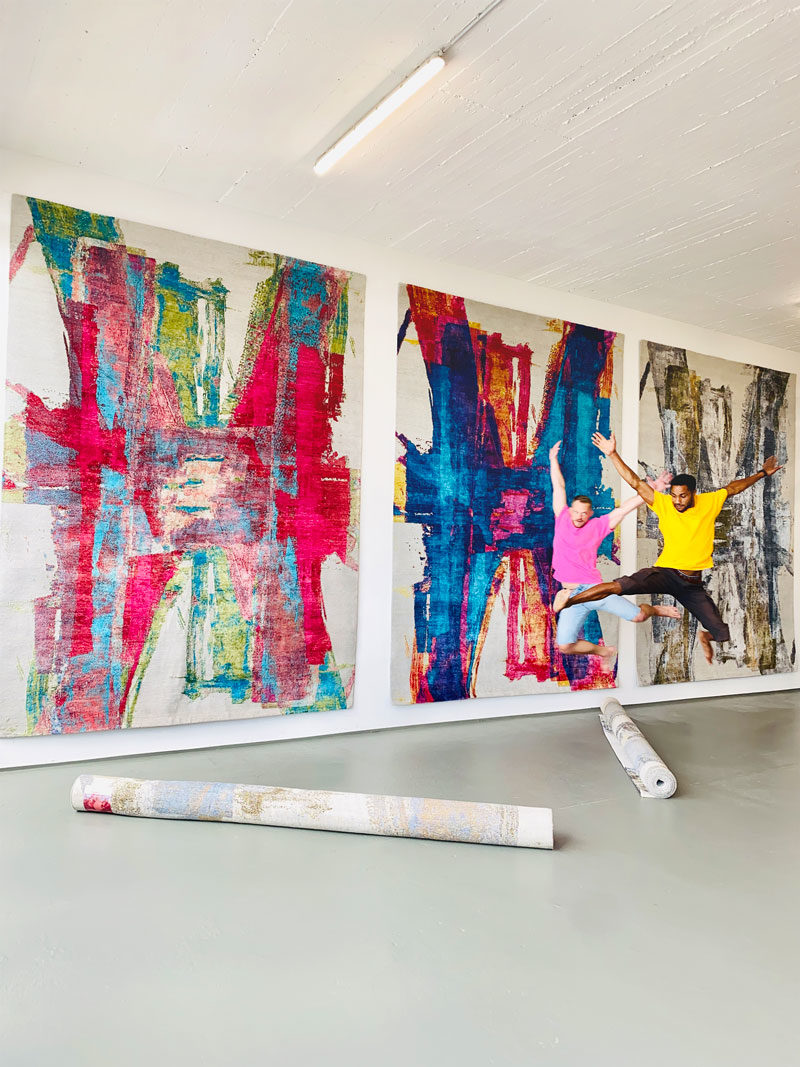

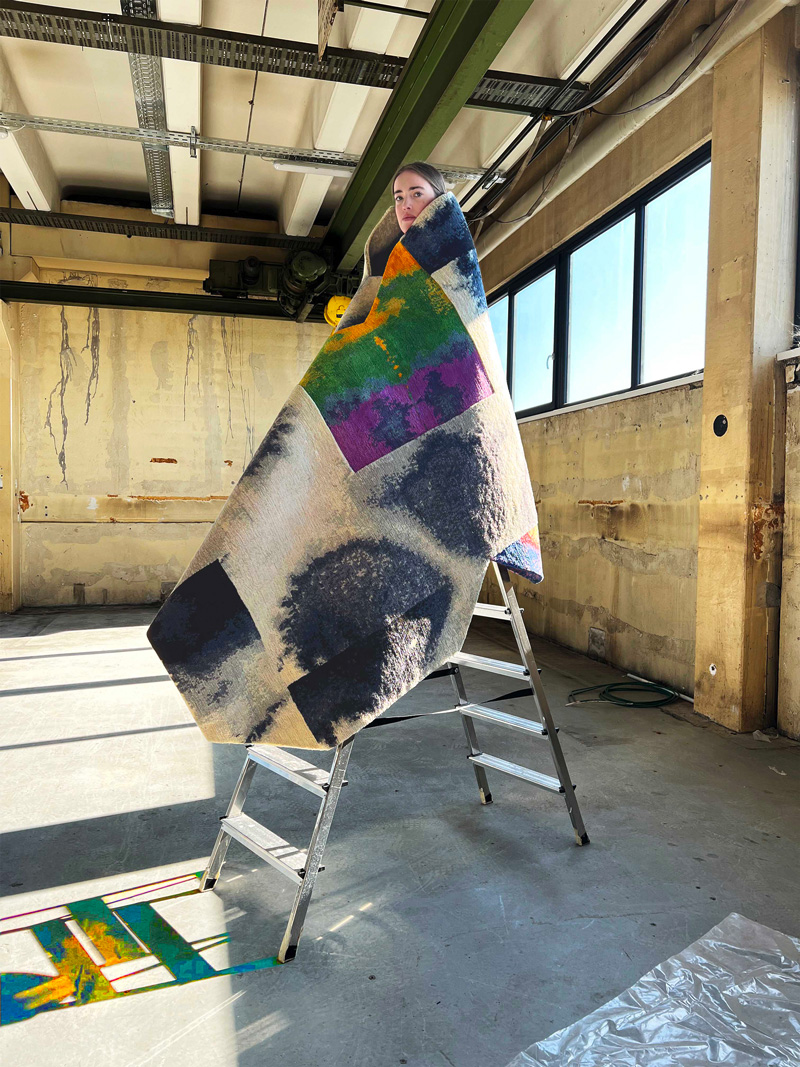
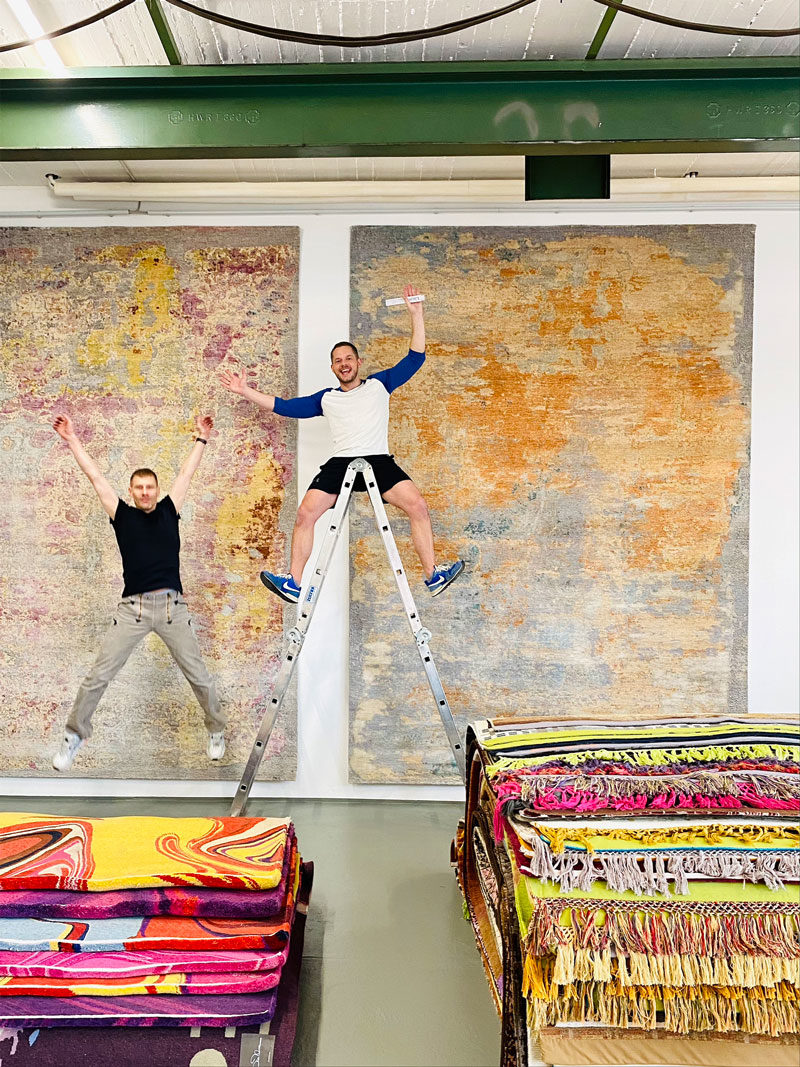
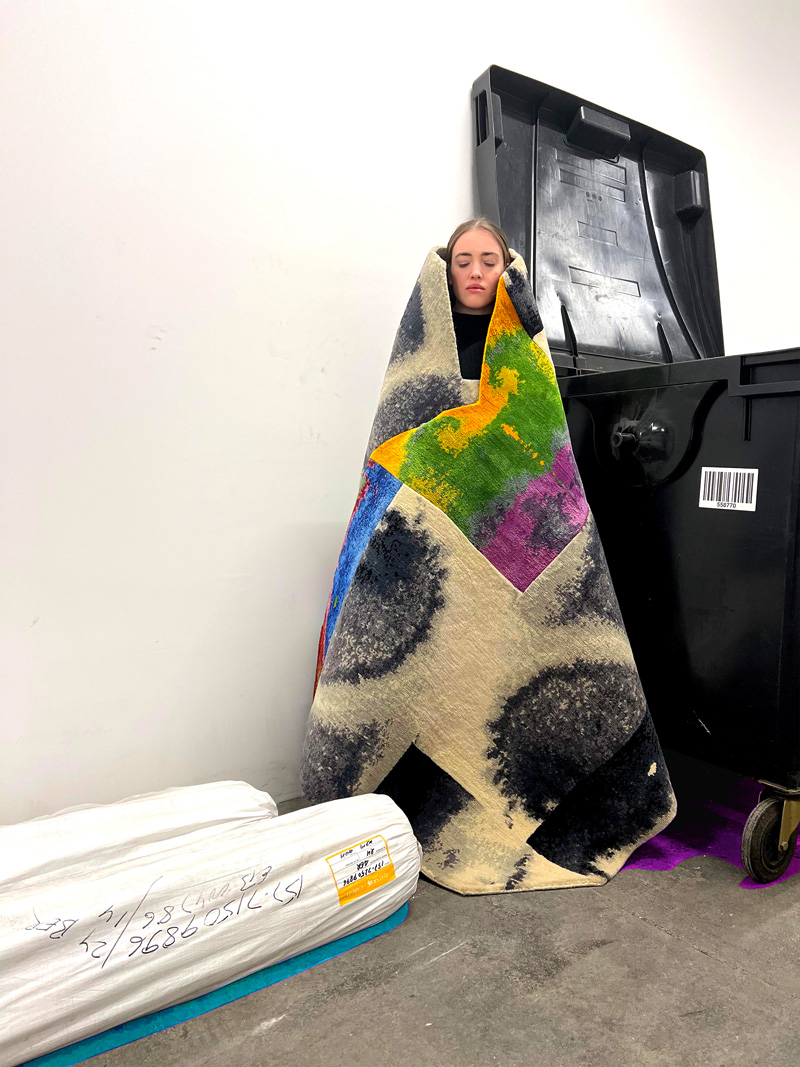

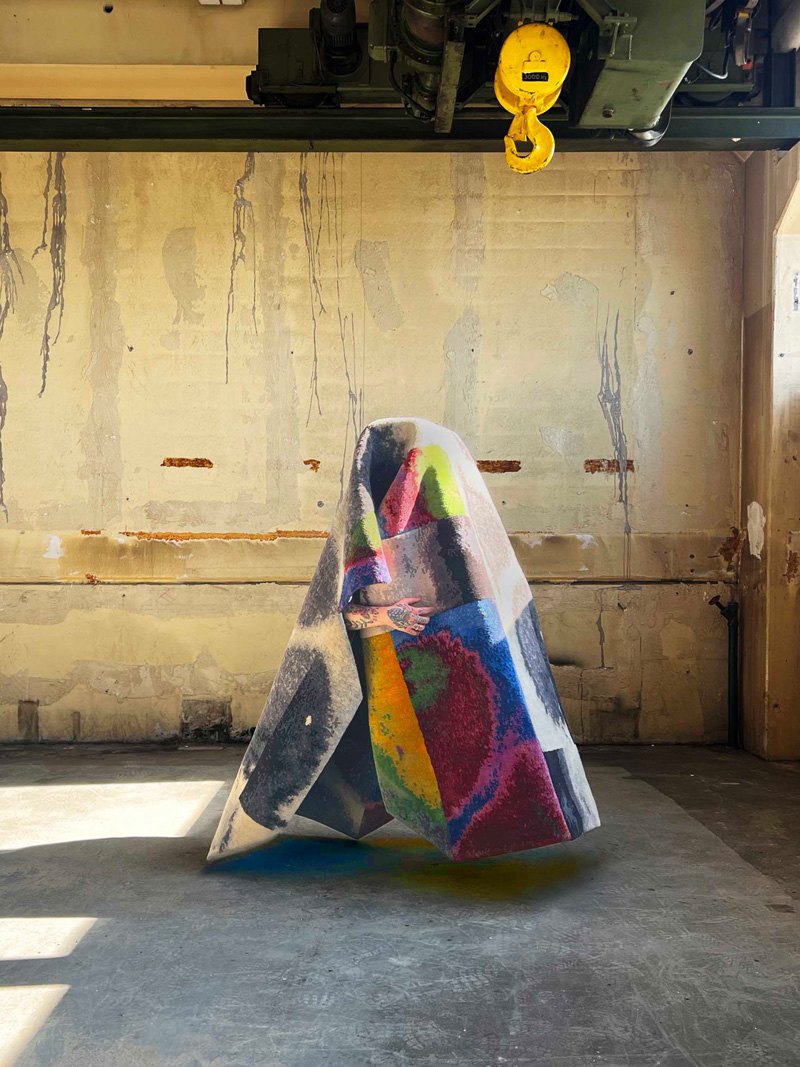
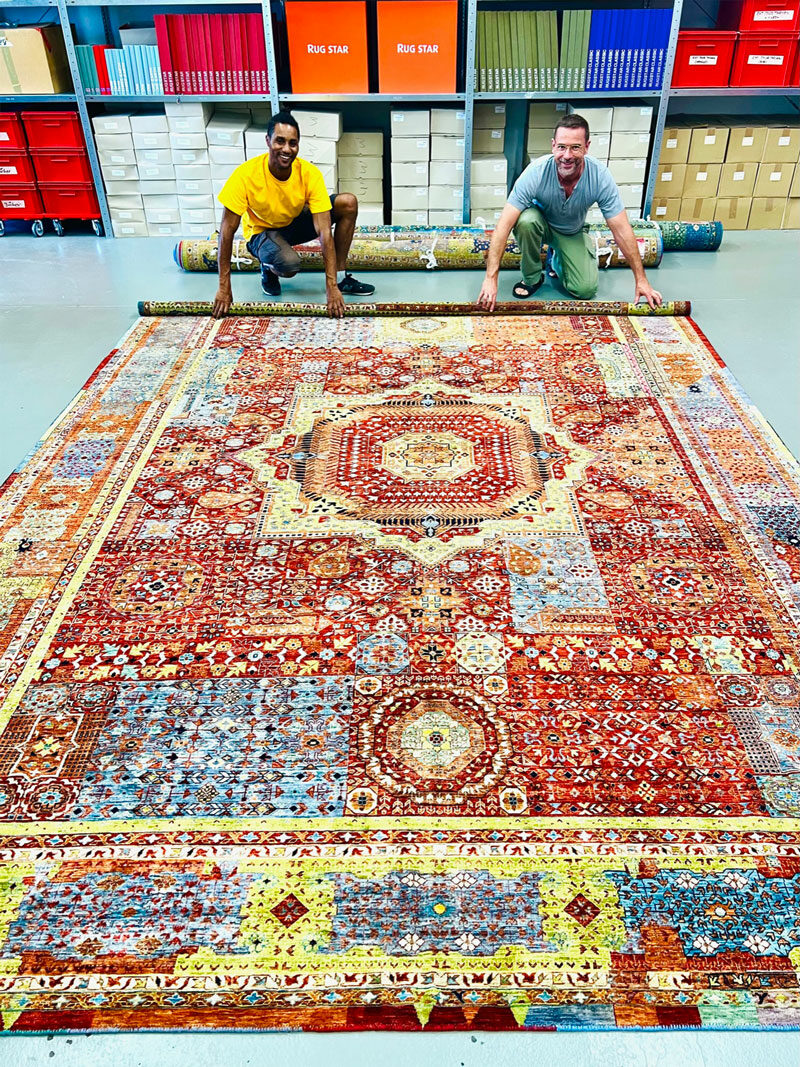

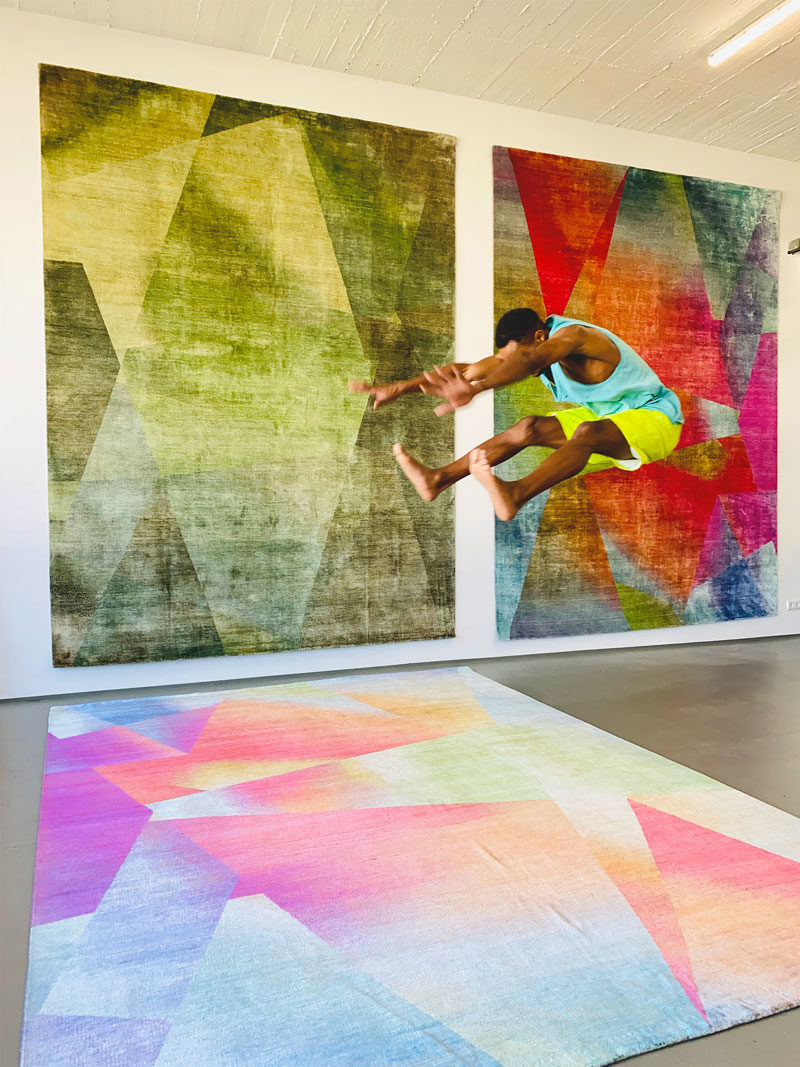




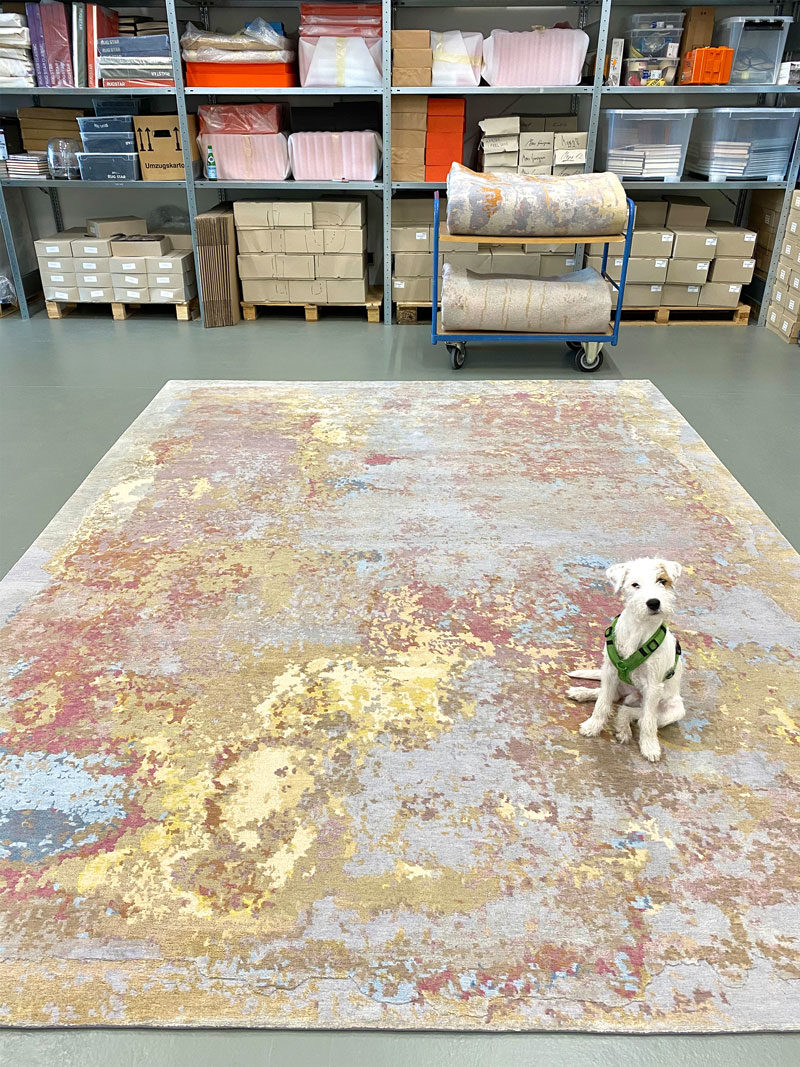
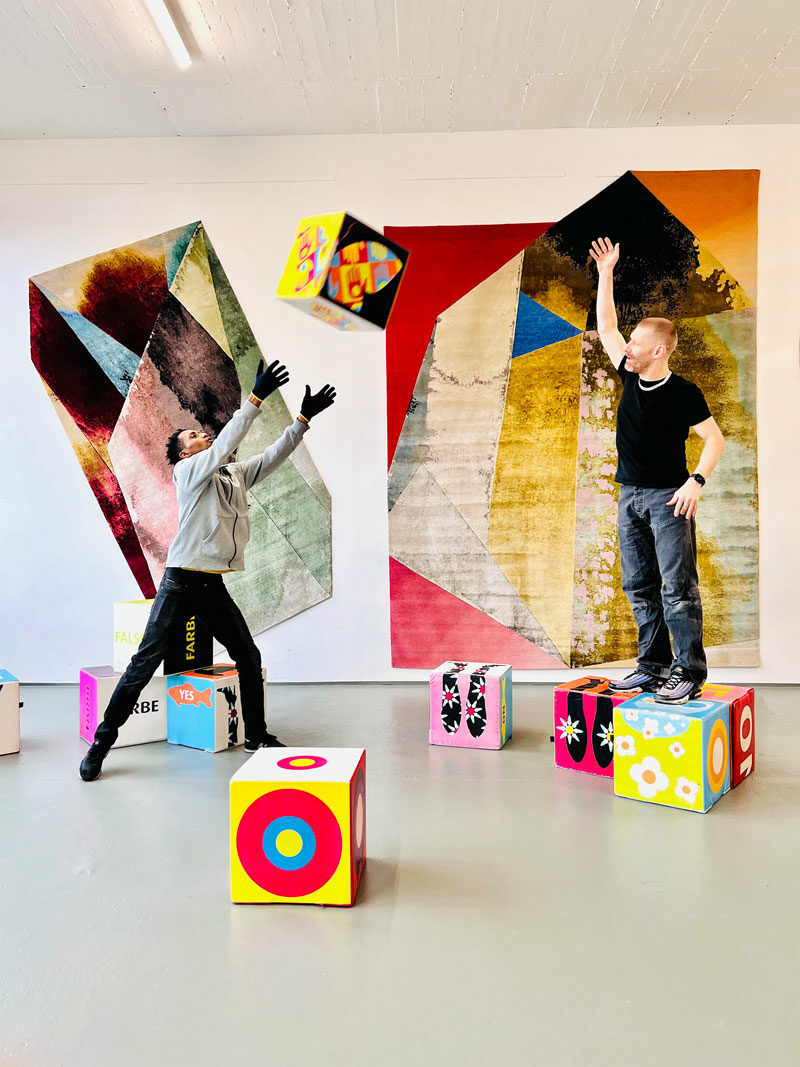
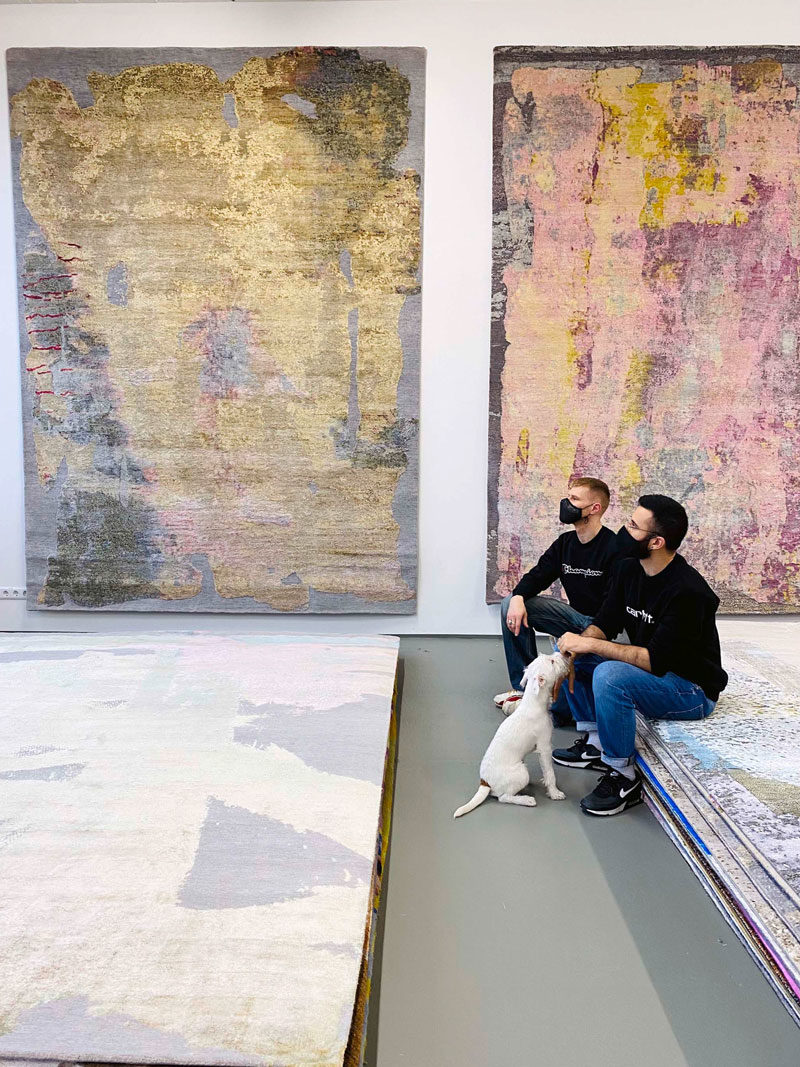
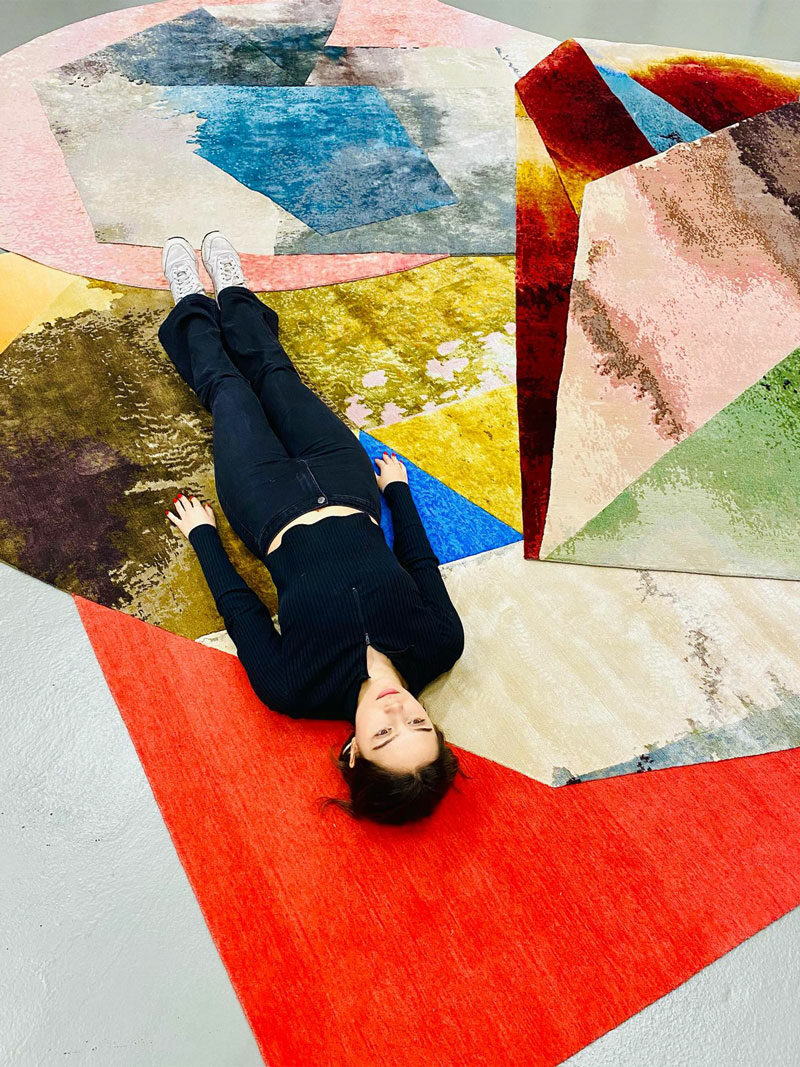
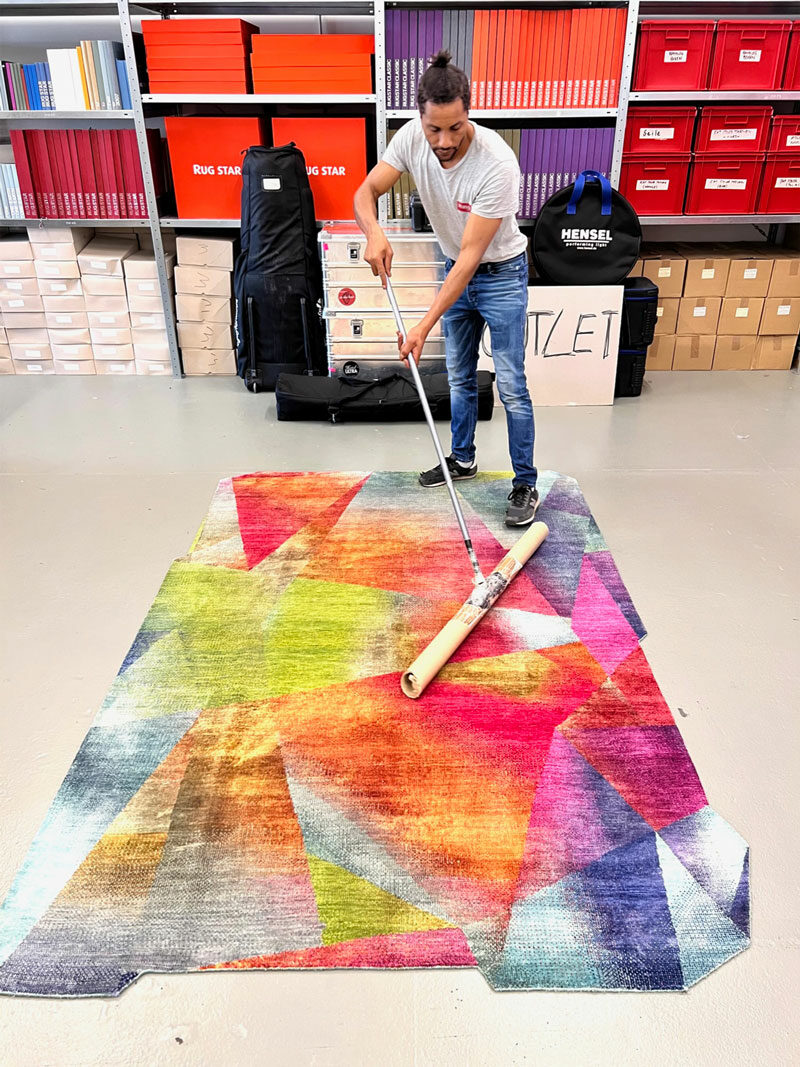
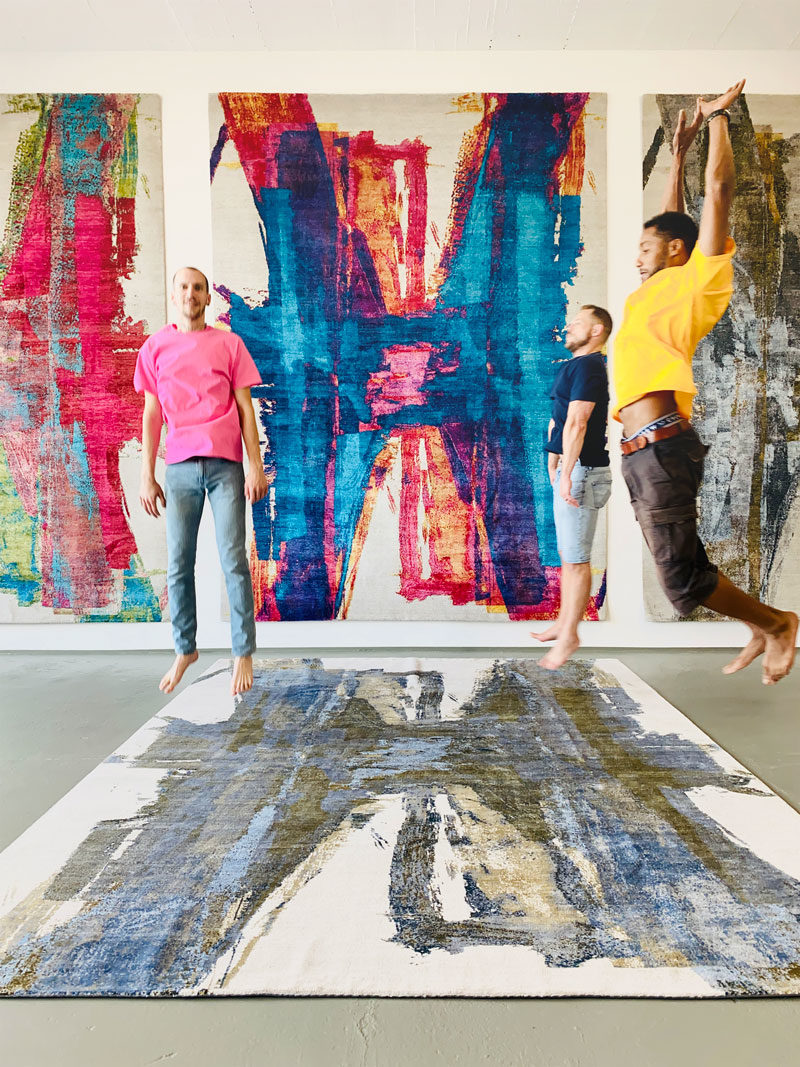
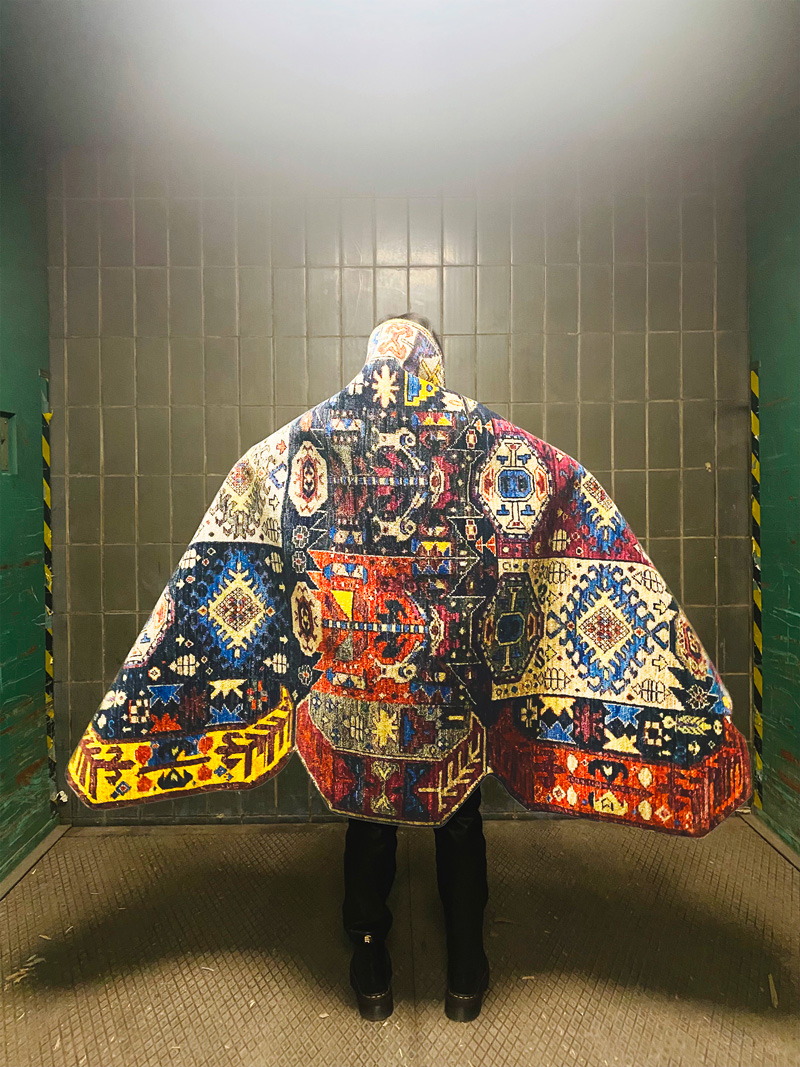

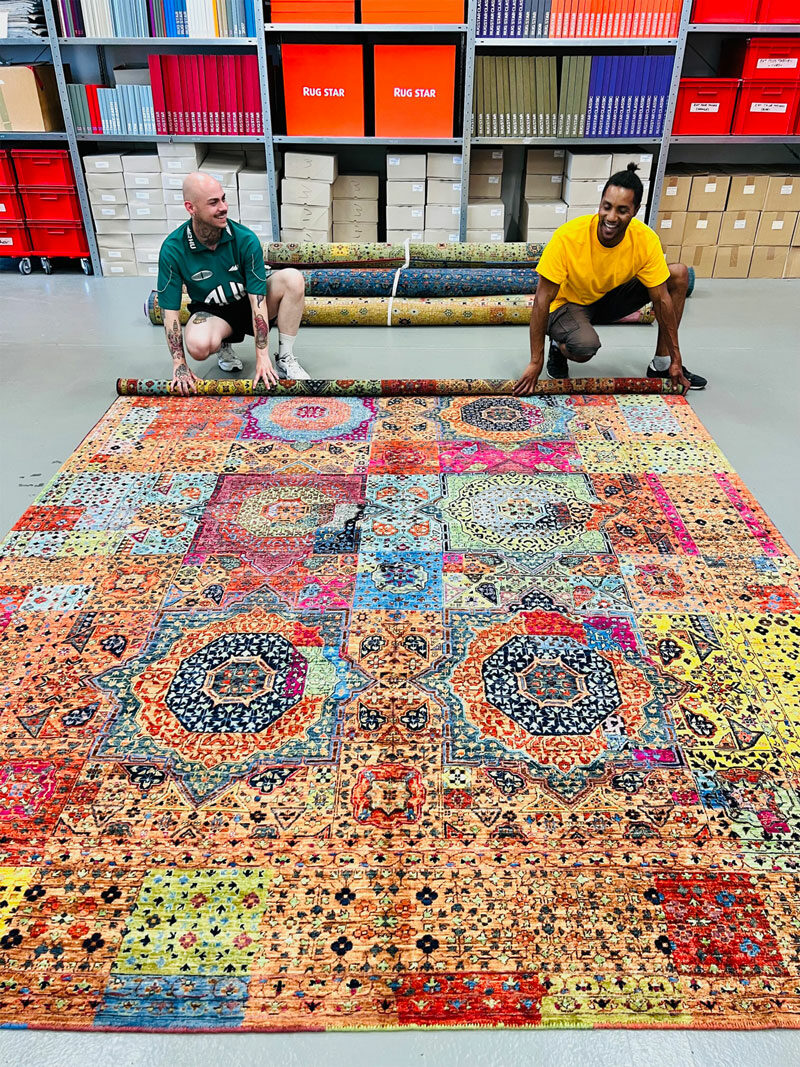

RUG STAR is not just a label; it is the embodiment of Jürgen Dahlmanns’ visionary artistry. In just 18 years, he has transformed his company from a one-man show into a carpet empire, now boasting 1,600 employees. Dahlmanns’ philosophy centers around diversity, movement, color, quality, and storytelling patterns.
Unlike many designers who confine themselves to one particular style, Dahlmanns embraces the diversity of living environments. Since its foundation, RUG STAR has developed an impressive collection of 1,400 designs, all of which are still available and can be customized upon request. One of RUG STAR’s trademarks is the ability of its motifs to inject a sense of movement into a room. Brilliant colors and animated patterns, along with the use of high-quality yarns, further elevate the brand’s creations.
For Dahlmanns, carpets possess an architectural dimension. They have the power to create a room within a room, without the need for additional walls. He considers his designs complete only when they are installed in their intended space, seamlessly integrating with the surrounding environment. This lock-and-key principle ensures that the carpets bring balance and resolve architectural challenges, culminating in perfection.
The success of RUG STAR is reflected in its numerous accolades. The brand has received multiple awards, including the prestigious Carpet Design Awards at the Domotex Fair in Hannover. Some notable wins include Best Innovation in 2005 for Rug Furniture, Best Modern Innovation in 2006 for Checkerboard Funk A, and Best Transitional Design in 2019 for NewClassic Balouch Reverse Original on LightPink.
The biography of Jürgen Dahlmanns is far from that of a typical carpet dealer. His journey began as a 23-year-old student hiking through Nepal’s Annapurna Dhaulagiri Trek. It was during this trek that he stumbled upon an old khaden rug in a sleepy farming village. The rug, with its intricate pattern and rich history, ignited a passion within him that continues to burn brightly to this day.
The fusion of Dahlmanns’ architectural background, his love for hand-knotted Tibetan and Persian rugs, and his unwavering dedication have propelled RUG STAR to new heights. The brand’s rugs, crafted in the majestic Himalayan mountains, the vibrant deserts of Rajasthan, and the picturesque valleys of Afghanistan, reflect the culmination of his artistic vision and commitment to quality.
With each new design, Jürgen Dahlmanns and RUG STAR continue to push boundaries and redefine contemporary rug art. Their creations transcend cultures and capture the essence of diversity, serving as a visual testament to the power of design to inspire, unite, and create a truly extraordinary living space.
It all started with a Tibetan rug that you purchased at the age of 23. What was it about rugs that fascinated you so much that you founded RUG STAR in 2003?
Between 1990 and 2002, I toured Nepal several times. I also made my first contacts over there, from which closer friendships would subsequently develop. Back then, the country was in a turbulent state due to the ongoing civil war. Tibetan friends ran a carpet manufactory in the royal city of Bhaktapur. And since the industry had retreated to Katmandu and international orders had dried up, they were all very desperate and helpless. However, I was an architect and had good taste. That’s how it all began. It was never done with the intention of setting up a company but merely as a favor. I was a friend offering advice who also had a passion for the product. Then one thing led to the next, and more and more tasks started to land at my feet. Some things in life don’t wait to be asked. They are standing right there, demanding to be brought to life. Then you notice that they fulfill and bring you to life.
A courageous step at the time, as carpets were not the fashionable items that they are today.
Absolutely. The step was greeted with laughter by other Berlin designers at the time. In the eyes of others, I saw only incomprehension, but that didn’t bother me. The fire from several sources already burned within me: that of the collector, of the inquisitive young academic, and of someone who felt a duty to society. Taking on responsibility always had a calming effect on me and gave me a pleasant feeling. It’s a characteristic that others tend to shy away from and avoid for as long as possible, but in me, it awakened the courage to fight for this manufactory and this craftsmanship.
From a one-man show to a company with 1,600 employees – were you always thinking big from the outset?
I founded RUG STAR back then with the help of a small loan and a six-month subsidy I qualified for after registering as a one-person company. The business plan that I had to submit a bore scant resemblance to what the company has actually become today. For the first three years, I had no team here in Germany, which meant that I had to develop and implement all processes myself. The range of duties was very broad, product development and on-site controlling in Nepal, understanding imports and the entire logistics chain, merchandise management and warehousing, marketing, sales, and so on. These days, RUG STAR produces hand-knotted Tibetan rugs at three production sites in Nepal and, for the past eight years, hand-knotted Persian rugs in Rajasthan. We also operate two production facilities for tufted carpets in China. The big and exciting news for me is the development that we are now going on the offensive by starting to produce in Afghanistan. I have wrestled with this decision for around three years. We have now designed an entire collection just for this project, and the parameters on the ground have been clarified. Just like a person, a brand or a business also has a lifeline of its own, it creates its own biography. We are no longer the innovative young career changers with the courage and determination to go out and conquer a new market. After 15 years, I have learned a great deal, not just about the product but also about the various markets. I have understood that one must sooner or later seize and fulfill one’s market position because an ever-increasing number of livelihoods depend on the success of a product. The trick, in this case, is to refuse to be corrupted, to continuously hone one’s ideas and products, to adapt them to the situation at hand, not to become weary, to stay curious and alert, and to keep the passion alive. Funnily enough, this can be achieved with a great deal of self-discipline and zest for life.
What were the greatest challenges facing the business during the initial phase?
After I graduated from university, I worked as an architect for three years on the construction site of the “MuseumsQuartier” in Vienna. As a young architect, this cultural building site with all its interrelationships – including political ones – presented an exciting challenge. Then came the jump into deep water. I couldn’t fall back on any of the things I had learned. The only things I had were the love of the product and of the people in Nepal. However, I did have a vision and a strategy that derived from my passion for collecting semi-antique Tibetan rugs.
And what was your strategy?
It was clear to me what I valued about the traditional craftsmanship, and what has been lost in the modern production techniques: I missed the identity, and without identity, it is impossible to communicate a product in the market. To do this, however, you must start by focusing on the provenance – something that many in the business have never done. It was important for me to restore identity in the production process using the knowledge, the provenance, and the ancient production techniques. This is because the market had over many decades modified the product to suit Western tastes until it became untrue to itself, and no longer held any value on the market. The rug had lost its soul and was therefore not without good reason no longer “in”. I had to persuade the people at the manufactory in Nepal first and foremost to break away from the homogeneity that had been instilled in them – encourage them to restore a sense of impulsiveness and identity in the material workmanship and dyeing techniques. It was like having to explain that the key ingredient of a good tomato salad is good-tasting tomatoes rather than standardized tomatoes that are merely suitable for transport. Everything begins at the sources; good wool has a life of its own. That’s where you start, and each subsequent step reinforces the life of the material. Then, the product has a recognizable product soul again later on.
In addition to hand-knotted rugs, you also produce tufted carpets in China. How do production and design differ?
Shortly after setting up my RUG STAR label, I was approached by Swedish furniture-maker IKEA. They invited me to design tufted carpets for their product range – the first German designer to do so. As part of this collaboration, I also traveled to China. This is where I met Ma Jin, my current business partner for the distribution of RUG STAR in China and the producer of my entire tufted collection. In September 2018, we opened our new 800-square-meter showroom in a prime location in Beijing. China has definitely become an important focal point in our work. Three years ago, we started to produce all of our key designs from the last 15 years in Tuft. The result is slightly clearer, and it has the effect of emphasizing the graphical element of my work. One advantage of Tuft is the faster production process. This enables us to get involved in projects, for example, in design hotels that require a tight time frame. Sometimes, a large carpet area simply has to be delivered in three months – something we could not do in the hand-knotted rug segment. This and the ability to scale volumes are the main advantages of Tuft. After all, it’s wonderful when my jellyfish motifs can swim for ten meters through a bar somewhere in the world.
You travel a great deal. How and where are your designs created, and do you still have time for them?
I spend seventy percent of my time traveling. Last year, I went on 28 business trips, mostly in Asia or in North America. I have learned to use the days spent in airports as design days. I have grown very fond of these. That’s because I don’t have to deal with everyday issues. I’m sitting in the middle of a bustling limbo that always presents me with unexpected details. Quite literally, it forces me to remain cosmopolitan. It also makes me practice my composure. I wasn’t always so adept at doing this but have it well under control now. I still develop 95 percent of the designs – for me, it’s like cooking. In other words, a task that allows me to relax and engage in an inner monologue with myself. It definitely helps me dissipate other energies as well.
How many collections do you design each year?
In the past 15 years, I have developed roughly 1.400 different designs, all of which are still available. We set up an archive of designs, the printed paper knotting instructions, the dyed wool specimens, and small samples in digital as well as physical form. Diversity is one of the mantras of my work. I never wanted to tie us to one specific style; that never interested me. I’m fascinated by the varied lifestyles of my customers. I see myself as the service provider who helps the customer to find the right product with the matching design. Traditionally, the year begins for us at Domotex in Hanover, which is still the world’s largest trade fair for floor coverings. I sometimes describe myself as a child of Domotex because we have exhibited there for fourteen years and because we forged most of our international contacts through this trade fair. We generally display two new collections there each year: one that focuses on innovative textures and techniques and a collection with new, narrative images and colors. As such, it is the framework of our endeavors for a year. It is a challenge to amaze the public again and again over so many years, to remain innovative, and to constantly have a finger on the pulse of the market. However, we seem to be pretty good at it, and that is where the company’s strength lies. We have no difficulty in seeing and understanding market trends. We also help shape them, which is hugely enjoyable.
Despite the multitude of designs, do you have a favorite motif?
I consider my designs to be complete only after they are installed in their intended resting place. For me, it’s the lock-and-key principle. Different types of architecture always have a special feature, and rooms often have a problem. Once everything is combined with my carpets and a balance is established in the space – only then are they perfect to me. To begin with, my motifs, which are structured according to specific compositional principles, are opportunities for me to introduce movement into the room later on. But yes, I do have a couple of favorites. I love the narrative motifs, which perhaps quote the naturalism of the 19th century. I always think of Humboldt in this respect and the explorers of the earth, which is why I have assembled an entire army of animals from the encyclopedias of this era which I then set free in my customers homes through my rugs. Many of these can be found in the Eden collection, which I have already been working on for 15 years and for which I still come up with new motifs or protagonists each year.
What are your sources of inspiration?
The customers with their unique living environments are my source of inspiration. Since our primary focus is on the project business, we receive projects on a daily basis, for which we then develop suitable designs. This means that the trends are automatically spread across our desk. We operate and distribute globally in almost 30 different markets, produce in four different countries. In addition, I spend most of my time traveling abroad. I sometimes see myself as a whale swimming through the sea with a vast open mouth. When I’m presented with a design commission, the answer is sure to be found somewhere in my whale’s belly. What I mean is that I react intuitively. Ultimately, it’s all just information that we absorb and release again. There’s no magic at play but one must remain open and sensitive at all times.
In the “IntimacyBerlin” campaign, you show RUG STAR carpets in the homes of friends. And you have recently been shooting in Portland. What is the background story here?
I have long been searching for a concept to show diversity in living environments. Three years ago, I hit on the idea of asking my closest friends in Berlin whether I could photograph my carpets and rugs in their apartments. In return for having the use of their apartment for an entire day, I cooked for them the previous evening in each case. The images that we created there were intended not only to show off the carpets but also to say something about my friends. In the meantime, we have produced nearly 300 images in Berlin; it is one of my fondest experiences. Since we have expanded in particular in North America in recent years, I flew with the entire production team to Portland, Oregon, in early summer 2018. That was a challenge in logistical terms, but the result was stunning and was presented as the third photography series at Domotex 2019, where it received multiple nominations for the International Carpet Design Awards. Our fourth photography series, “IntimacyChicago”, is already scheduled for June 2019. The modern architecture of the metropolis is the ideal setting for documenting the new products on show at Domotex 2019 in pictures. The focal points here are on the expansion of the Waterlily collection in the area of 9/9 knot quality and our innovative “sandblast” surface finish, which gives even pure woolen carpets a very attractive, almost velvety sheen. The photography series will be presented at the NY Rug Show in September. Immediately afterward, we are due to start production of “IntimacyScottsdale”, which will focus on the theme of “Desert & Country Homes US”. It is really hard work, I do the design, all of the planning, and I am the art director on set. Who knows what will happen after that? I am very drawn to completely different cultures such as Russia or China – to focus more strongly on diversity concerns.
Do you also want to debunk the preconception that valuable rugs are too good to be put on the floor?
The carpet has an architectural dimension in relation to furnishings, it separates traffic paths from seating areas, creates space in the room without removing walls. If I enter a museum, I have to suppress my urge to reach out and touch exhibits. They exude sensuality and material character but are out of reach. It is different with regard to works of applied art: They can be and are meant to be walked on and enlivened, they have also been tested in use over centuries. Their beauty is enhanced with use as they have the ability to develop patinas. It is comparable to people, who are also immune to the ravages of time. They merely make us deeper and more sensuous.
What are your challenges for the future – specifically in relation to the digital presence and online trading?
With hand-knotted carpets, the emphasis is on the product’s identity, the use of authentic materials, traditional production techniques, not to mention the cultural narrative dimension of the provenance. With its space-defining characteristic for interiors, the carpet’s character is much easier to convey in a shop setting – with a view of the product on-site. However, we are now entering a new era in which everything relating to identity has to be explained in a way that also allows it to be conveyed digitally. I am certain that it can be done. The mode of communication is different, but not the content and not the values. We want to develop a solution that resembles a liberal platform and nevertheless contributes to the retention of the brand’s value in the future. I am fascinated by everything about the topics of the digital marketplace – also in this type of niche product or also in relation to a small brand like RUG STAR. How does one actively and creatively bring together one’s dealers, customers, aficionados, interesting parties, and friends on a single platform? How does one create a transparent warehouse among the various stakeholders? That is the focus of our company for the next few months.
The place I was born in might be on the Dutch side of the German border and yet, I am German through and through. Born in 1967 as the youngest of three siblings, I grew up with parents who were, at least from a young boy’s point of view, a couple of wild things. The antiquated post-war attitude of the preceding generation wasn’t their cup of tea, so Flower Power was more than just a fashion statement to them. It became their way of life. Alternative means of education combined with an abundance of creative experiments came with it for us children. Looking back at those days now, I’ll be forever indebted to my parents for having had the most loving and colorful childhood that other children could only dream of.
At the age of 16, I moved to Berlin where I graduated from Hermann Hesse High School in Kreuzberg. The German capital was still divided then and the Berlin Wall surrounded the western part of the city like a band of protective armor. It felt weird and to me, it was a city waiting to be awoken from slumber. In Berlin, I went on to study political science and later chose to become an architect.
My life would change when I visited Nepal for the first time at the age of 23. After having completed the Annapurna circuit in under two weeks, I happened to stumble across my first Tibetan rug on my way back down to the valley. That was the moment when I turned the rug addict. In the years that followed, my newly awoken interest in hand-crafted rugs took me back to Nepal and China on numerous occasions. I simply needed to gather all there was to know about those ancient methods of turning wool into this product that I had begun to regard as magical.
A degree in architecture in a pocket I moved to Vienna in 1998 and, now a young architect, helped to develop the city’s MuseumsQuartier, one of the largest museums in Europe. Still, the lack of ethical values in this profession made me move back to Berlin only three years later. I decided to turn my passion for hand-knotted Tibetan and Persian rugs into dedication.
In October of 2002, I established RUG STAR by Jürgen Dahlmanns and have not looked back since.
Enjoy.
Wow, what an experience we are all facing these days. It is my first pandemic, so let’s share how we are confronting it as some experiences frighten us all, some confuse us, but some also make us nutty and happy. I would like to talk about the latter, always been convinced that creativity can help and guide positivity, so I want to share this aspect of the pandemic with you.
Shops are allowed to open again, and so are our headquarters and flagship store RUG STAR in Berlin, Mitte district. For those who aren’t familiar with Berlin, this area is known for its global avant-garde, as many creative and liberated people settled here in the last 20 years and now call it their home and neighborhood. But once alive and vibrant, the neighborhood now appears empty as COVID-19 rules the routine, resulting in an empty city center and for us, the call to conquer our neighborhood with our latest project “JoyJumper, conquer your city.”
I hope, in the following lines I am writing now, I can make you join. United, we are strong to create a visual statement, with the happiness we want to be seen by others around the globe, nothing more and nothing less. Talking about the passion for the work we create in the cities we love and inhabit.
Since mid-May 2020, I have been meeting up once a week with my dear friend and Berlin-based photographer Caroline Saage. We start moving from my shop at Rosenthaler Platz, pulling a packed handcart with eight contemporary rug designs as our inventory for the next two hours and exploring the normally crowded places in their new appearance.
Whenever we see an abandoned space, we stop and throw a hand-knotted rug over our heads; the rest comes automatically in the moment’s emotion. Of course, I love the work of Caroline Saage, with whom we also created the KingsRobe campaign in Berlin and Jaipur in the village of the weavers, where we shot our contemporary rugs as robes wrapping our bodies. But to be honest, any of you can do it with a phone, as snapshots have their performative beauty, and this is the aesthetic we are talking about.
Caroline and I agreed we would try to do this for the project for the next weeks or maybe months. In German, you would say “Bis das es uns aus den Ohren herauskommt.” I tried to put this phrase into my Google translator; the result is the following: “Until it comes out of our ears.” Why: so we can live with joy later about the time we faced our first pandemic. Convert what makes us confused or frightened into joy with the ability of creativity. Please join us; we are all in this together.
Now, I must share a unique experience we had during this project. There was a particular moment when we decided to place a 35 kg heavy rug over our heads and jump as high into the air as possible. It was a surreal feeling, defying gravity and the weight of the world, as we embraced the freedom and joy that creativity brings. In those fleeting moments, we found a release from the worries and uncertainties of the pandemic, transcending the limitations imposed upon us. It was a celebration of resilience and a testament to the power of the human spirit.
In 2014, during my search for the perfect campaign for the German ZEITmagazin, I had the pleasure of meeting Caroline Saage for the first time. Instantly, we formed a deep connection and became best friends. However, it took us another four years to finally bring our vision to life with our first solid campaign, Kings Robe. I consider myself incredibly fortunate, as this campaign marked the beginning of a series of remarkable collaborations, exhibitions, and happenings. Each memory is filled with love and joy, and they hold a special place in my heart.
Our collaboration is a true reflection of Berlin-style synergy. Throughout the process, it always feels like being on stage, playing free jazz. We break free from traditional roles within a project because we trust that each team member is capable of mastering any task.
But let’s return to the story.
Naturally, the day we chose for the campaign shoot happened to be one of the hottest summer days in August 2018. We gathered in the Rug Star showroom in Berlin-Mitte in the early hour of 6 AM and set off in a car, heading north. Caroline had been in touch with an old recreation center located near a lake close to the city, and we had the idea of getting undressed and draping the rugs around our bodies like robes. As we immersed ourselves in the process, a certain attitude emerged – we felt like ancient kings in a long-lost kingdom. It was this feeling that ultimately inspired the name of the campaign: Kings Robe.
What sets our campaigns apart is that we never hire models. Instead, it’s always my team and me who become the subjects. Each campaign becomes a performance, a visual documentation of us living and interacting with the rugs.
I feel incredibly blessed to be able to embark on this creative journey with my team. It’s a transformation of work into unforgettable moments that will forever hold a special place in our hearts.
In the years that followed our initial campaign, Kings Robe, we had the opportunity to translate our vision into other captivating projects. Two notable campaigns that emerged in subsequent years were JoyJumper and KingsRobe India.